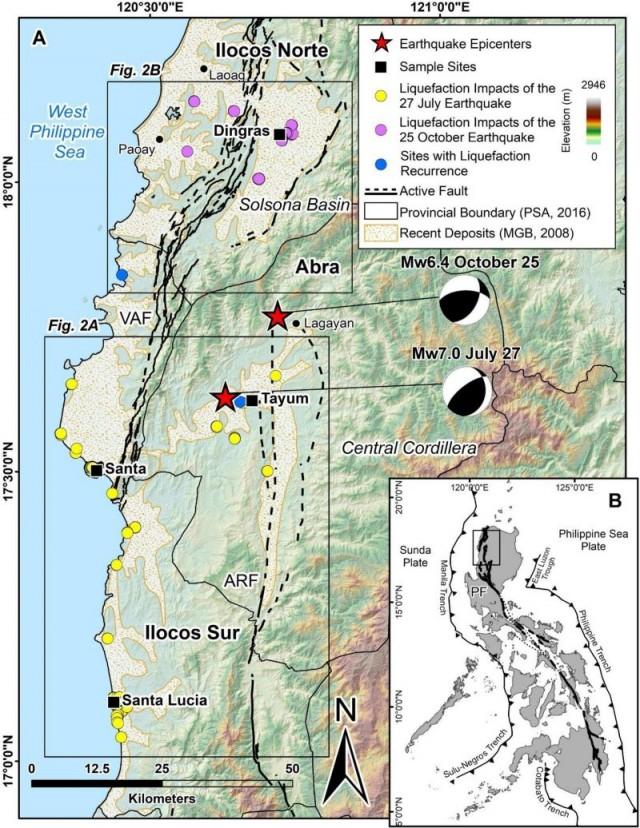Strong quakes in 2022 caused liquefaction in parts of Northwestern Luzon - PHIVOLCS

The two strong earthquakes that struck the province of Abra in 2022 had led to liquefaction in the lowlands of northwestern Luzon, the Philippine Institute of Volcanology and Seismology (PHIVOLCS) said.
State seismologists said that the magnitude 7.0 earthquake on July 27 and the magnitude 6.4 earthquake on October 25 caused sediments on the lowlands of Ilocos Norte, Ilocos Sur, and Abra to behave like liquid.
“The majority of liquefaction impacts of the MW 7.0 earthquake occurred along the Abra River delta, while the MW 6.4 earthquake had most of its liquefaction impacts concentrated in river dikes and abandoned channels across the Solsona Basin,” according to a new study by PHIVOLCS.
Liquefaction occurs in sediments, which are loosely packed and sandy in composition, in lowlands such as beaches, deltas, riverbanks, reclaimed lands, and floodplains.
The liquefaction in the lowlands of Ilocos Norte, Ilocos Sur, and Abra manifested as sediment and water venting (or sand boils), lateral spreads, ground fissures, ground subsidence, and localized swelling, the state seismologists said.

PHIVOLCS warned that liquefaction can cause poorly built structures to sink or tilt.
“For both earthquakes, liquefaction caused damage to flood control structures located along levees adjacent to river channels,” the study read. “The geologically young, unconsolidated, and water-saturated nature of the sediments in these geomorphological units makes them highly susceptible to liquefaction hazard.”
''Since mapping investigations were reliant on reports of suspected liquefaction accounts from the LGUs (local government units), affected residents, and the internet, there is likelihood that not all of the liquefaction impacts were documented,'' the study said.
While the liquefaction in those provinces happened far from urbanized areas, PHIVOLCS advised that future infrastructure needs to be prepared for the possible occurrence of liquefaction.
“As these areas become more developed in the future, the buildings and infrastructure will need to be designed to be compatible with both the geologic and hydrologic conditions, including the potential for repeated occurrences of liquefaction,” the state seismologists said. —VBL, GMA Integrated News




